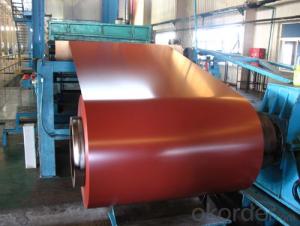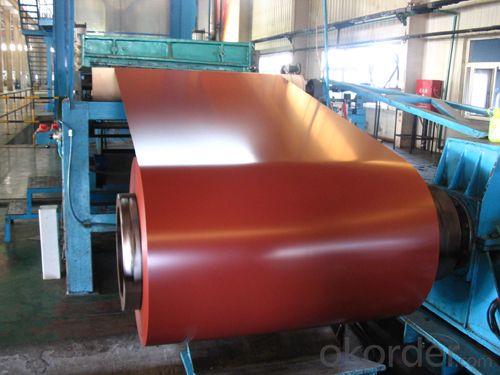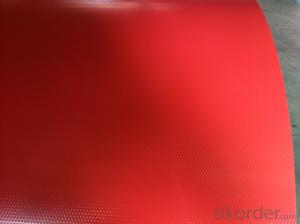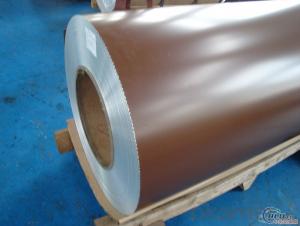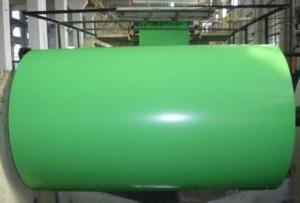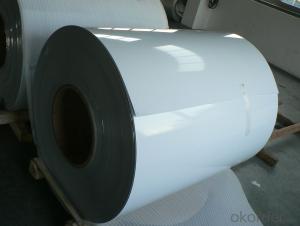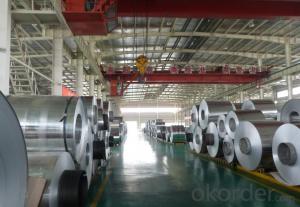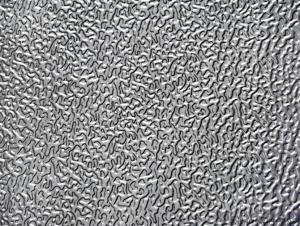Sublimation Aluminum Sheets Uk - Aluminium Coils for Color Coated PVDF 20-40 Microns
- Loading Port:
- Shanghai
- Payment Terms:
- TT OR LC
- Min Order Qty:
- 2 m.t.
- Supply Capability:
- 20000 m.t./month
OKorder Service Pledge
OKorder Financial Service
You Might Also Like
Specification
1.Structure of Aluminium Coils for Color Coated PVDF 20-40 microns
Aluminium Coils for Color Coated PVDF 20-40 microns is one semi-finished aluminium material. This strip can be rolled down to aluminium coil,sheet,circle ect. The alloy AA1050 is widly used in building, industry ect. Its weight is much lower than steel. So many customers choosed aluminium material instead of steel.
2. Main features of Aluminium Coils for Color Coated PVDF 20-40 microns
a.Competitive price---We have our own mills and can produce mill finished aluminium coils, so we can control the production cost better.
b.Professional after-sale service---We have more than 15 years exportation experience and you need not worry about the exporation problems.
c.Fast delivery time---We can control the delivery time within 35 days.
3. Image of Aluminium Coils for Color Coated PVDF 20-40 microns
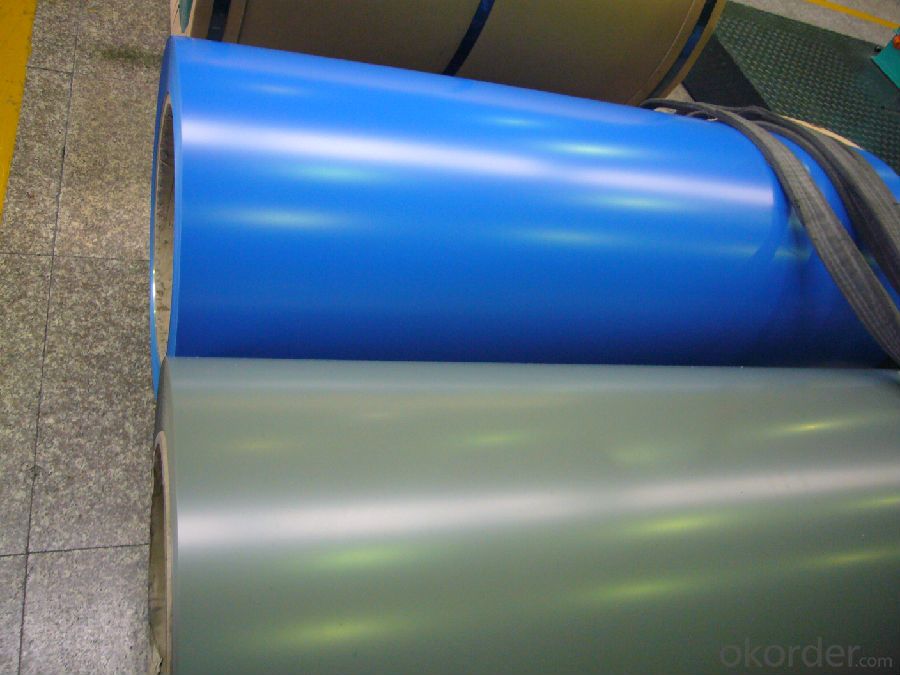
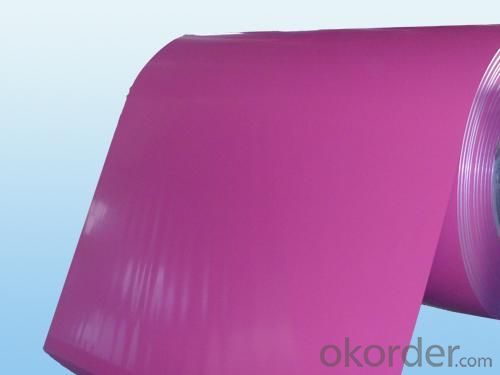
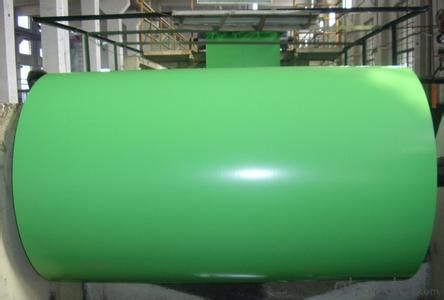
4. Product Specification of Aluminium Coils for Color Coated PVDF 20-40 microns
| Alloy | Temper | Style | Thickness | Width |
| AA1100 | H14 | Direct Casting | 0.2mm-3mm | 1000mm-1500mm |
5.FAQ of Aluminium Coils for Color Coated PVDF 20-40 microns
What is the quality standard?
---Usually our standard is GB3880-2006
What is the largest width?
---It is 2300mm
What is the MOQ?
---Usually we can accept 80 tons.
- Q: What is the difference between aluminium plate 5A05 and 5A06?
- The aluminum plate doesn't have this material. Have you made a mistake?Give you a full one,1, pure aluminum: Material: 1050/1060/1070/1100/ 1200/ thickness: 0.1---20mm width: 800---2200mm2, alloy aluminum: Material: 2A21/3003/5052/5083/6061/6082 /8011 thickness: 0.5---260mm width: 800---2800mm3 curtain wall Kaiping aluminum plate: Material: 1060/1100 thickness 0.95, 1.35, 1.85, 2.35, 2.7, 2.85mm, width 0.8---1.5m
- Q: Can aluminum sheets be used for bus bodies?
- Indeed, bus bodies can be constructed using aluminum sheets. Aluminum, renowned for its lightweight and durable qualities, is frequently utilized in the fabrication of bus bodies. Its exceptional strength-to-weight ratio renders it an optimal selection for bus manufacturers, as it enhances fuel efficiency and expands payload capacity. Moreover, aluminum exhibits remarkable resistance to corrosion, a valuable attribute for vehicles perpetually confronted with diverse weather conditions. Additionally, aluminum can be effortlessly shaped and fabricated, enabling the production of intricate forms and designs. Consequently, aluminum sheets are widely favored for bus bodies owing to their robustness, lightness, resistance to corrosion, and adaptability.
- Q: Are aluminum sheets suitable for food packaging?
- Yes, aluminum sheets are suitable for food packaging. Aluminum is a highly versatile and widely used material in the food industry due to its unique properties. It is lightweight, flexible, and has excellent barrier properties that protect the contents from external factors such as moisture, light, and oxygen. These properties help to maintain the freshness and quality of food products. Additionally, aluminum is resistant to corrosion and does not react with acidic or alkaline substances, ensuring that the taste and quality of the food is preserved. Furthermore, aluminum sheets can be easily shaped into different forms, making them ideal for various types of food packaging such as trays, containers, and foil wraps. Overall, aluminum sheets are a safe and effective choice for food packaging, providing durability, protection, and convenience.
- Q: Are aluminum sheets suitable for food contact applications?
- Yes, aluminum sheets are suitable for food contact applications. Aluminum is a widely used material in the food industry due to its various beneficial properties. It is non-toxic, non-reactive, and corrosion-resistant, making it safe to use with food. Aluminum sheets can be easily formed into different shapes and sizes, making them suitable for a wide range of food packaging and cooking applications. Additionally, aluminum has excellent thermal conductivity, which allows for efficient heat transfer during cooking or baking. It is also impermeable to light, moisture, and oxygen, providing a protective barrier to maintain the freshness and quality of food. Overall, aluminum sheets are a popular choice for food contact applications due to their safety, versatility, and durability.
- Q: Are 101 aluminum sheets easy to work with in terms of cutting, drilling, and shaping?
- Yes, 101 aluminum sheets are generally easy to work with when it comes to cutting, drilling, and shaping. Aluminum is a lightweight and malleable material, making it relatively easy to manipulate using common tools. However, the specific ease of working with 101 aluminum sheets may vary depending on the thickness of the sheets and the specific tools and techniques used.
- Q: Can aluminum sheets be used for sign making?
- Sign making can indeed utilize aluminum sheets. The sign making industry favors aluminum for its resilience, lightweight properties, and ability to resist corrosion. It can be effortlessly cut and molded into different dimensions and styles, granting it versatility across various sign types. Moreover, aluminum sheets can undergo painting or coating with vinyl graphics to increase their visual allure, enhancing their ability to attract attention. Ultimately, aluminum sheets present a dependable and economical choice for crafting signs that are both durable and of superior quality.
- Q: Are aluminum sheets resistant to corrosion?
- Indeed, corrosion is highly resisted by aluminum sheets. Upon exposure to air, aluminum creates a safeguarding oxide layer on its surface, effectively inhibiting any subsequent corrosion. This oxide layer serves as a shield, safeguarding the core metal against environmental elements, including moisture and corrosive substances. Furthermore, due to its minimal inclination to rust, aluminum is extensively favored in numerous domains where corrosion resistance is paramount, such as the fabrication of aircraft, automobiles, and marine vessels. In conclusion, aluminum sheets are renowned for their extraordinary ability to withstand corrosion, thereby enhancing their sturdiness and durability.
- Q: This question asks about the typical duration an aluminum roof sheet can last before it needs to be replaced or repaired.
- <p>The lifespan of aluminum sheets for roofing can vary depending on the quality of the material, installation, and environmental factors. On average, a well-maintained aluminum roof can last between 20 to 50 years. High-quality aluminum roofing materials, when properly installed, can even exceed this range, offering a lifespan of up to 70 years. However, it's important to note that regular inspections and maintenance are crucial to extend the life of any roofing material, including aluminum.</p>
- Q: I was quoted $5000+ to upgrade my house from 100A electric service to 400A. Part of the reason for the high cost is the cost of copper. What size copper wire is needed for 400A, and how much does it cost per foot? Would it be a lot cheaper to use aluminum wire?
- Yeah, aluminum isn't allowed in new or renovated construction. The size of cable needed for 400A will be determined by the service provider. Probably 4/0 size cable. New service means a new panel and new wiring. 14/2 is suitable for lighting and general receptacle use up to 15A, but 20A is required for all kitchen outlets, so use 12/2. If you use 12/2 throughout, be sure to use 20 amp breakers in the panel. Since 14/2 is only rated up to 15A, if you use 14/2 with 20 amp breakers, you run the risk of overheating and causing a fire.
- Q: Are aluminum sheets suitable for architectural roofing?
- Yes, aluminum sheets are commonly used for architectural roofing due to their lightweight, durability, and corrosion resistance.
Send your message to us
Sublimation Aluminum Sheets Uk - Aluminium Coils for Color Coated PVDF 20-40 Microns
- Loading Port:
- Shanghai
- Payment Terms:
- TT OR LC
- Min Order Qty:
- 2 m.t.
- Supply Capability:
- 20000 m.t./month
OKorder Service Pledge
OKorder Financial Service
Similar products
Hot products
Hot Searches
Related keywords
